Russian engineer. Great-grandson of the French architect.
How amazing and interesting life is! It takes you to people that you you never thought or even dreamt of meeting. But the God reads our souls and sends us "a telegram". So I had a meeting with Nikolay Thibault.
I really like him a lot, and probably more than anybody else from Dyatlov group. But I did not know anything about him, Kolya's relatives never gave interviews, it even seemed to me that they were no longer alive, and the branch of the Thibeaux-Brignolle had long been broken.
Journalist Gennady Grigoriev, who for some time took part in the search for the young hikers and made a heart breaking account of the events in this cold and terrible winter of 1959, said memorable words that many can identify with, including me: "You became like my own dear children!"
Anna Matveeva was the pioneer, no matter how strange it may sound, she wrote a beautiful story about the the human aspect of that terrible tragedy. One can help but shudder when reading the episode from the book, describing the call at her door late at night. She looked through the peephole and saw the entire dead group standing in front of her door. When she dared to open the door to them, there was already no one on the landing, only the pools of melted snow on the floor ... A stunning scene.
I had a dream, in the very first days, when I learned about the tragedy of Igor Dyatlov's group, could not sleep for a long time, was under strong impression from what I had read. I didn't really know anything yet, even confused their names until "the names, like wounds, left scars in my heart that won't heal" ...
I dreamed that same cedar, near which there was no one. Events have already occurred. It was twilight, I remember the feeling of longing and irreversible loss. Cedar was everywhere scattered with needles and twigs from the spruce tree, the snow was tampered from the many people who had been there. And a voice from somewhere above to the right told me: "Pay attention to Thibault." Why Thibault? I did not know and I still don't know till the day. This is a mystery to me.
"So that your youth is renewed like the eagle..." Psalm 103:5
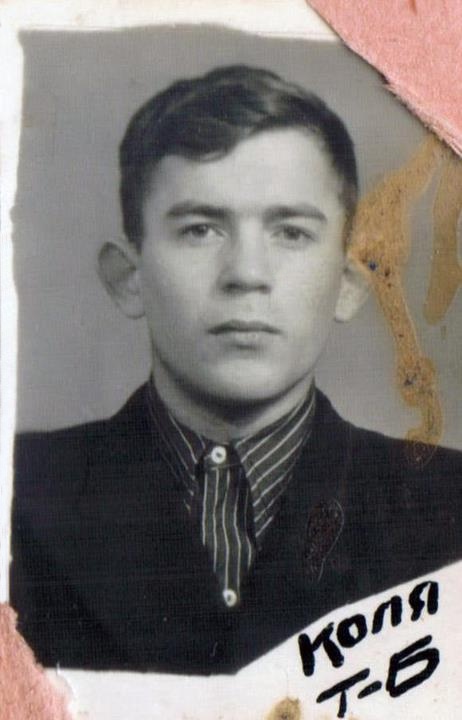
A year later while in St. Petersburg, I went to my favorite place - the library. And there, at the very entrance to the reading room, on an empty table lay three blue volumes of Roger Martin du Gara's The Thibaut Family. I even shuddered - it was a sign!
And in these very days I receive a letter from Anna Yermolaeva, a relative of Nikolay Thibault. My heart start beating in my chest, I was already waiting for some development related to Kolya. Just did not know what it would be.
The letter was like news from Kolya from that distant past. So the Lord sent me an acquaintance with good, very interesting people - relatives of Nikolay Thibeaux-Brignolle.
Anna wrote to me that she read our discussions with Gennady Ivanovich Kizilov in Samizdat and would like to support me in the situation of the conflict with G. Nikishina about a document I published related to the trek of the group.
It turns out that in 2007, Mrs. Nikishina via genealogy site tracked down Marina Evgenyevna Kazantseva and, from her words, recorded the history of the genus Thibeaux-Brignolle. This condensed story is the result of Marina Evgenyevna's many years of searching for and studying archival documents about the Thibault family.
Unfortunately, the information shared with Mrs. Nikishina was published without mentioning Kolya family as a source, which caused some confusion. In addition, there were some biographical inaccuracies in the publication.
I asked Anna and Marina Evgenyevna to give a short interview, to tell what they know about the Thibeaux-Brignolle family in Russia, what is known about Kolya, about his childhood and youth. About his very short life, so tragically cut off on the slope of Mount Kholat Syakhl.
Anna and Marina Evgenyevna kindly agreed to answer my questions. For which I am very grateful! Thanks to them I learned so much new and interesting facts about that time. And I have a new wonderful interlocutor on many topics - Anna Ermolaeva, second cousin of Nikolay Thibault, which acquaintance I cherish.
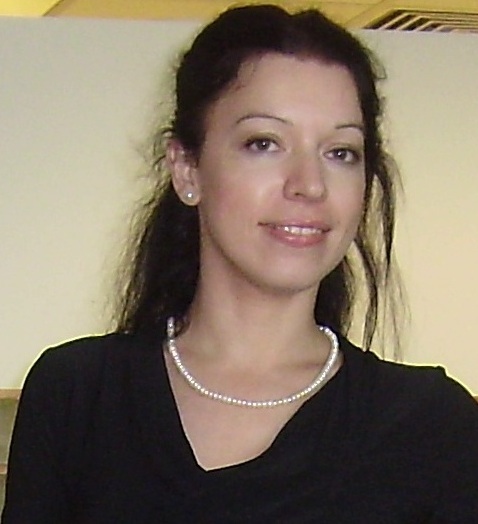
Anna Ermolaeva, second cousin of Nikolay Thibeaux-Brignolle
Notations in the text:
MEK - Marina Evgenyevna Kazantseva
SEK - Sergey Evgenyevich Kazantsev, brother of Marina Evgenyevna
AE - Anna Ermolaeva
MP - Maria Piskareva
MP: Marina Evgenievna, please tell us what is your kinship with Nikolay, which branch of the family are you from?
MEK: For me, Nikolay Thibault is a cousin and uncle. Colin's father - Vladimir Iosifovich - and my own grandmother - Anna Iosifovna - are brother and sister.
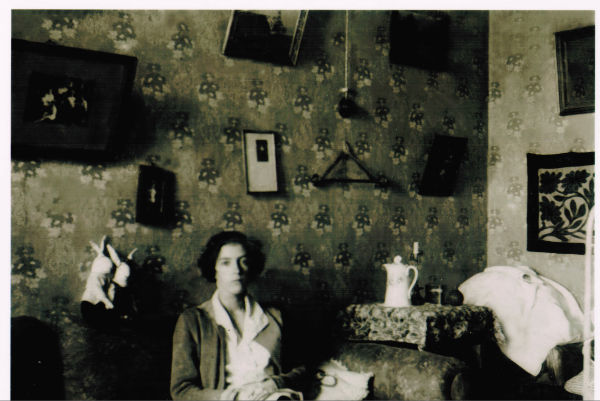
Anna Iosifovna Ivanova (Thibeaux-Brignolle), Kolya Thibault native aunt, in the apartment on Gorkogo Street, 7, Sverdlovsk, January 1927. Archive Kazantseva M.E.
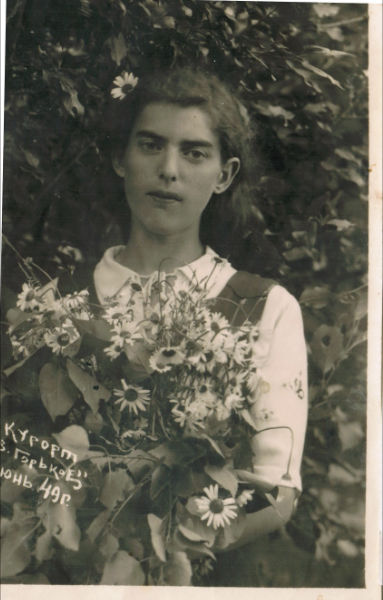
Kazantseva Olga Andreevna, Kolya Thibault cousin, daughter of Anna Iosifovna Ivanova (Thibeaux-Brignolle). Resort "Lake Gorkogo", July 1949. Archive Kazantseva M.E.
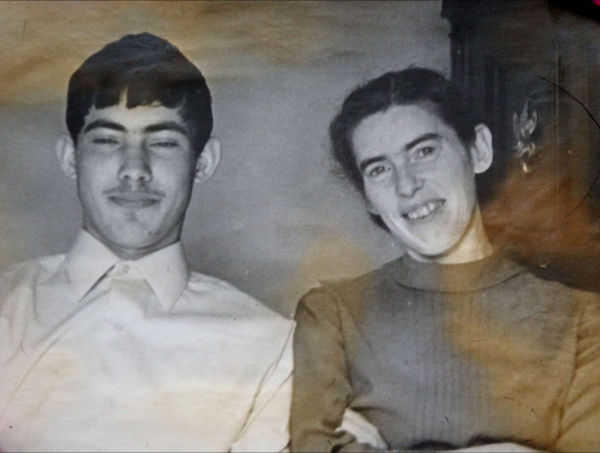
Olga Andreevna Kazantseva, Kolya Thibault cousin, with her son Sergey 1969
You know Muzafarova Elizaveta Iosifovna, who identified his things?
MEK: I know Elizaveta Iosifovna Muzafarova very well This is the sister of my grandmother Anna Iosifovna. Iosifovich siblings were eight. One child died as an infant, at the age of 31, Ekaterina Iosifovna died from consumption. There are three sisters and three brothers left: Natalia, Elizaveta, Anna, Vladimir, Sergey, Dmitry.
Anna Iosifovna Thibeaux-Brignolle is my grandmother, her daughter Olga - Kolya's cousin, is my mother. Anna Ermolaeva is my daughter.
MP: Thank you, Marina Evgenyevna! Now that we have sorted out your relationship, please tell us about yourself how did you started reseraching the history of the Thibeaux-Brignolle genus in Russia?
MEK: I grew up in the Urals, in the city of Kamensk-Uralsky, but I got my education in Moscow and have lived here for a long time (I graduated from the Moscow Textile Institute with a degree in textile design). My parents spent their entire lives in the Urals.
In the Soviet Union very few people knew the history of their ancestors, there was no access to the archives; they were discovered in 1990, but few knew how to search. There was not popular.
In 1989, German Vitalyevich Gasselblat, a retired major of militia, came to the Urals from the Leningrad, and began the process of rehabilitating the repressed people in the case of the Industrial Party (both his grandfather and Kolya Thibault's father were repressed in this case). Having lived in Yekaterinburg for ten years, he taught many people how to conduct a genealogical search, inspired people to compile their pedigrees, in fact he created from scratch the genealogical movement in the Urals, was the inspiration for the creation of the Urals genealogical society.
G. V. Gasselblat held a conference in Sverdlovsk in memory of all Ural engineers who suffered from repression.
My mother, Olga Andreevna, after passing the school of Gasselblat, for ten years collected information in the Urals according to our Ural ancestors: mining engineers Denisov, Ivanov, Devi, Frese, Kulibin, Thibeaux-Brignolle.
According to the Thibeaux-Brignolle, traces led to Orel and Petersburg.
After the death of my mother in 2001, I met my mother's friends-genealogists in Sverdlovsk, with Hasselblatt in St. Petersburg. He taught me how to search, drove through archives and libraries in St. Petersburg. And now, since 2002 I have been engaged in archival searches in Orel, Petersburg, Moscow, Ekaterinburg, Bryansk, Anapa for the tenth year. And my daughter Anna is in Paris, Nantes, Brignole, Petersburg. Something is on the Internet.
I enter the Moscow Historical-Pedigree Society, made two reports on the Savyol Readings about our French ancestors. In Yekaterinburg, the magazine Vesi published in 2009 (numbers 7-8) the article "Memories of the Ural Teacher" on the notes of my mother in 2001, under my editorship. A book about our French ancestors will soon be ready for all the archival materials found.
MP: Tell us, please, about Kolya's ancestors, about the very machinist Thibault, who came to Russia and laid the foundation for a new Russian branch of Thibault's name, about Kolya's father, Vladimir Iosifovich, about his mother.
MEK: Kolya'sreat-grandfather - Francois Thibault - came to Russia and settled in St. Petersburg at the very beginning of the XIX century.
It was a young Frenchman who knew Russian not very well, with a penchant for mechanics and inventiveness. Francois married Theresa Holmers, who came to Russia from Holstein with her parents. He managed to make a career in Russia. He did not return to France.
According to archival data, first Francois Thibault worked in the Directorate of the Imperial Theaters of St. Petersburg as a carpenter, then as a stage engineer, a mechanic. For ten years, from 1829 to 1839, he served as the chief machinist-mechanic of the Directorate of the St. Petersburg Imperial Theaters.
Great-grandfather Kolya - academician of architecture Iosif Franzevich Thibeaux-Brignolle, city architect of the city of Orla. There are still preserved buildings built on his projects.
The city of Orel. Ul. Gurtieva, house 8., built by the project of great-grandfather Kolya, I. F. Thibeaux-Brignolle
Stone house made of rubble stone, built in 1861-62, for Colonel AM Osipov. The initial project is Thibeaux-Brignolle. Later the architect Morozov attached a portico. Now here there is a hospital of the Internal Affairs Directorate of the Oryol region.
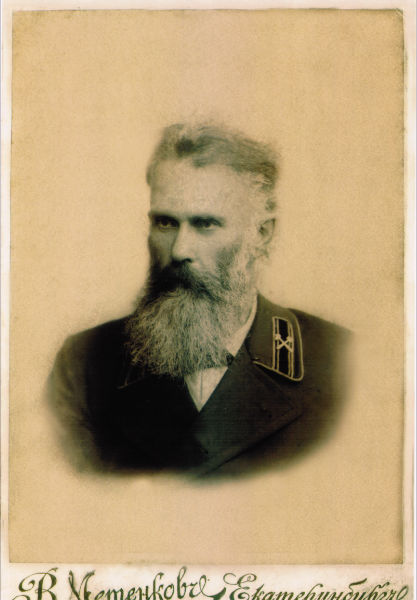
At the same time, Kolya's grandfather, the mining engineer Joseph Thibeaux-Brignolle, moved to the Urals.
Iosif Iosifovich Thibeaux-Brignolle is Kolya's grandfather. Here he is 46 years old. Ekaterinburg, 1897. Inscription on the back: "To the esteemed colleague Alexei Illarionovich Ignatiev from the loving Joseph Thibeaux-Brignolle, 1897, September 21". Archive Kazantseva M.E.
Kolya's mother, Anastasia Prokhorovna Bautina, was born in the South Urals to the family of the blacksmith Bautin Prokhor Yakovlevich, who worked all his life at the Petropavlovsk Zlatoustsky Uyezd Plant. Anastasia Prohorovna received higher education, graduating in 1942 from the Central Moscow Distance Learning Course in St. Petersburg.
Anastasia Prohorovna, a teacher by vocation, taught German. She worked in primary school, then in secondary school for 30 years.
Kolya's father, Vladimir Iosifovich Thibeaux-Brignolle, was a mining engineer.
In his student years, Vladimir Iosifovich took part in student unrest, was under arrest, hunger striker, was deported to Vologda province, and then - outside Russia. As a result, he received a diploma of mining engineer at the Mining Academy in Freiberg, Germany.
Returning to Russia, Vladimir Iosifovich served as a mining engineer, participated in the restoration of mountain mines destroyed during the First World War and the Civil War. There are documents where employees of the restored enterprises thank him, a lot of good is written. Vladimir Iosifovich participated in the creation of the project "Magnitogorsk" - the largest metallurgical enterprise in Europe at that time. Grandfather G.V. Gasselblat was the director.
The builders of "Magnitogorsk" were subjected to repression in the early 30s.
In January 1931, Vladimir Iosifovich was arrested and sent to SIBLAG (Novosibirsk). At this time in Sverdlovsk, his wife and two children were evicted from their own cooperative apartment. Fortunately, they were sheltered by a former subordinate of Vladimir Iosifovich, a technician Leonid Kataev. Leonid's wife's name was Augusta Dmitrievna, and her daughter was Marousia (Maria). These people are very risky, helping the family "the enemy of the people".
When the development of Prokopyevsky and Osinovsky mines began in Siberia, Vladimir Iosifovich was transferred to the Osinovsky mine and worked there in the mine together with other prisoners. A year later, in June 1933, he was reincarnated and transferred to the position of chief of the technical department in the mining area of the mine. His wife and son Volodya were allowed to come to him and live in the village of Osinniki. And Elizabeth's daughter was already 17 years old, and she worked in Sverdlovsk.
July 5, 1935 in Osinniki son Kolya was born.
However, in 1937 repression intensified. In 1938, Vladimir Iosifovich was sent to the deep taiga, to Gornaya Shoriya for heavy work - the construction of an iron ore deposit. His wife and children stayed in Osinniki and waited for the end of his ten-year term. In January 1941, Vladimir Iosifovich returned to Osinovsky mine and got a job, already as a civilian, as a projector of the Molotovugol Trust.
In August 1942, he was sent to Tashkent. However, he was never recruited anywhere, although he traveled to the mines seven times. He did not have the funds for further travel and for life. The wife sent the money back. He returned to the Kuzbass, to his family.
After all the trials, losses and humiliations, his strength was undermined. He fell ill and died in the hospital in September 1943. He was 57 years old.
Vladimir Iosifovich Thibeaux-Brignolle was fully rehabilitated by the Decree of 11.04.91.
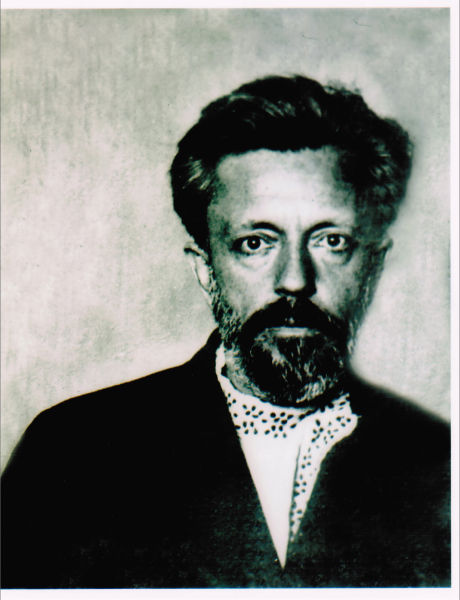
Vladimir Iosifovich Thibeaux-Brignolle. Photo on the day of the arrest on January 7, 1931. From the personal file of the NKVD was received by his daughter E. V. Thibeaux-Brignolle
How all this is sad and typical for Stalin's time. On the example of the tragedy of one person, one family, one can draw analogies with the millions of families affected by the communist regime.
Anna, please tell me, and did Kolya's mom go to the camp? Recently in one of the forums in thread about Kolya's biography someone claimed that he was born in a camp.
MEK: This is not true. Only Kolya's father, Vladimir Iosifovich, was sent to a camp. His wife and children lived in Sverdlovsk, and then - in Osinniki.
MP: You said that G. Nikishina made a number of inaccuracies when she published information about Kolya's family on the Internet. What are they? I would like to understand and correct these mistakes.
MEK: She wrote about the French ancestor of Kolya, that "the stage engineer Thibeaux-Brignolle came to Russia".
In fact, a person who came to Russia was called Francois Thibeaux, the prefix "Brignolle" will appear much later, from his sons.
Another inaccuracy about the biography of Kolya's father: "Vladimir Thibeaux-Brignolle chose his father's profession for himself, entered the St. Petersburg Mining Institute".
In fact, Vladimir chose another institute and another profession: the St. Petersburg Polytechnic Institute, the shipbuilding department. But after his expulsion from Russia for participation in student movements, he was educated at the Higher Academy in Freiberg, Germany.
MP: As I understood, the Brignolle prefix means a city in France? When was it addet to the name of Thibault?
AE: Maya, the question is interesting because the researcg on the matter was done by no other but Kolya's father himself, Vladimir Iosifovich. In the last years of his mother's life, he recorded her memories of the family's history.
We know that the prefix "Brignolle" added to the "Thibault", which created a unique family name belonging to only one family, appeared in the children of the machinist Thibault, and not all. The first documentary evidence is from 1839.
There are many spellings of the name Thibault in French (Thibeaux, Thibeault, Thibault, etc.), but in Russian they are all pronounced and written in the same way. At that time in Petersburg there were other Frenchmen named Thibault, although with another French writing, including a well-known sculptor. The desire was natural for the sons of our machinist, who actively pursued a career in Russia, to change their surname so that they would not be confused with other Frenchmen. It would be logical if the choice of the prefix "Brignolle" was explained by the origin of the machinist Thibault.
According to the written memoirs of my grandmother Kolya, the first Thibault came from the French town of Brignolles. However, Vladimir Iosifovich's hand made a remark "is doubtful." It is possible that, living in Europe in the early XX century, Vladimir Iosifovich checked the Brignolle archive and did not find any traces of his ancestor.
This year I worked in the archives of the French Foreign Ministry in Paris, Nantes, and found a number of documents where the birthplace of Francois Thibault was also indicated by the city of Brignolles. It is a small picturesque town in the south of France, in Provence, with a population of about 15 thousand inhabitants.
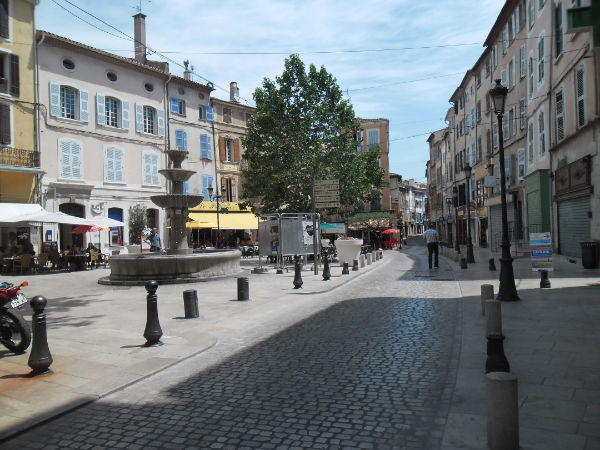
The town of Brignolle in France, Provence. Caramy Square, June 2012
I was there twice, I checked the church book of records of births, deaths, marriages, but did not find our Thibault there.
This is almost a detective story: in documents (I found a file in the archives of the French Ministry of Foreign Affairs about marriage and children of F. Thibault), he indicated that he was from Brignolle. But in Brignolle there are no records in church books about him!
I have ideas for new searches, but so far the birthplace of F. Thibault and the reason for choosing Brignolle as the second part of the family name is a mystery.
MP: Anna, don't you think Kolya's date of birth published on the web is wrong - June 5. The same date stands on the grave pedestal, in the cemetery where Kolya and his comrades are buried. You mentioned another date of birth - July 5. I looked at all the known archival documents published on the Internet by the Memory of Dyatlov group Foundation and found out that the questionnaire, where the wrong date of birth was written - June 5 - and there on his date automatically moved to the grave plate, was filled not by Kolya himself, but by the Human Resources Officer, it is evident from the handwriting that it was a woman. And in one of the documents it is noticeable that the personnel officer wrote the letter "l" as the letter "n".
Recording by the hand of the personnel officer. Date of birth: June 5

Handwritten by a personnel officer. Not clear it it is "n" or "l".
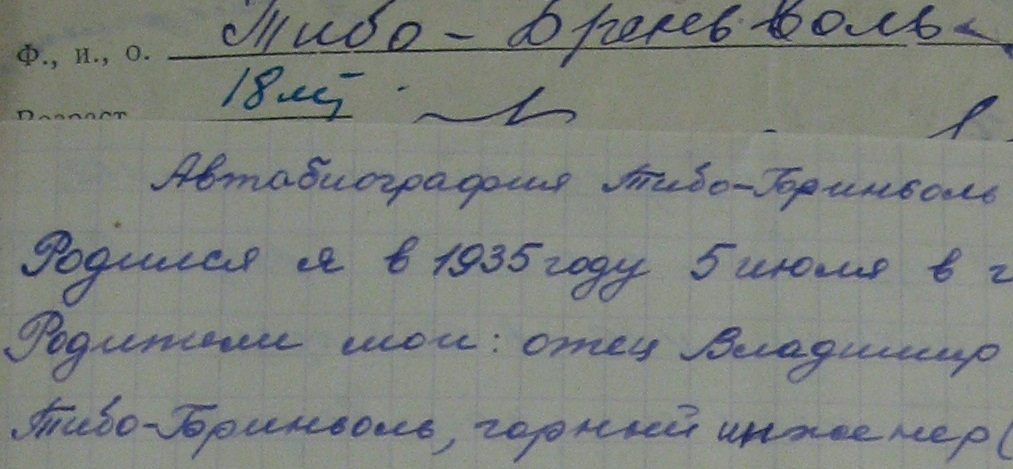
Kolya himself clearly wrote by hand in his autobiography that he was born on July 5th.
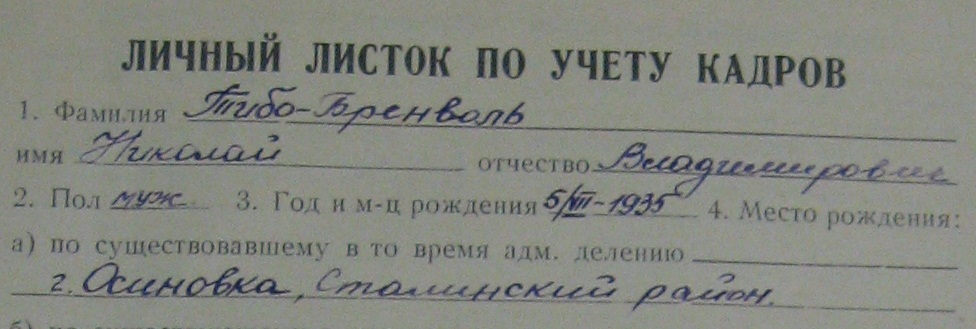
And here the month of July is marked with Roman numerals, no mistake in the letter here!
Maya, yes, we are sure that the correct date is July 5, as it was written by Kolya's hand, while other papers were filled by the clerk and made a mistake.
MP: Some researchers wonder why the family did not require a correction of the date, at least on the monument?
MEK: His birthday was known only to his mother and sister - my aunt Lyusya. But Kolya's grave was in Sverdlovsk, and they lived far away, in Kemerovo. His mother was a sick woman, exhausted by adversity. She could not physically come to Sverdlovsk and never saw Kolya's grave.
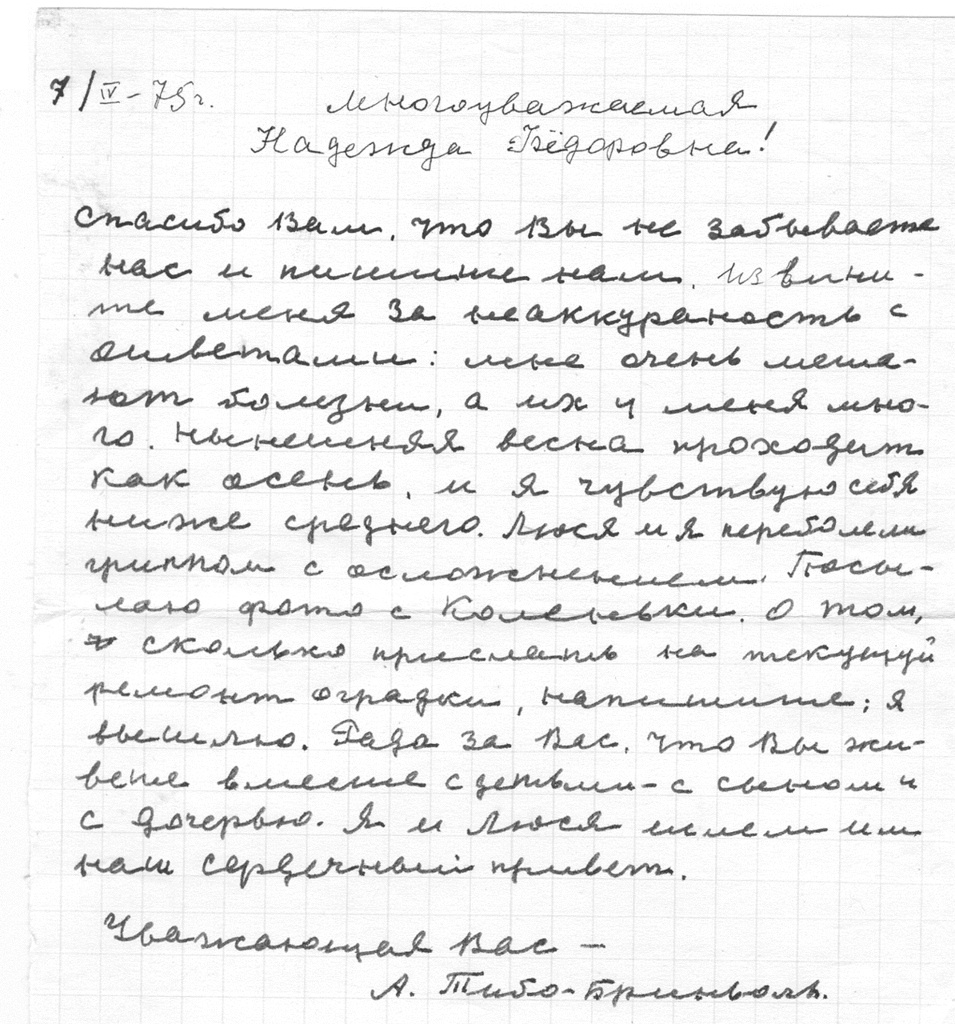
Letter from A. P. Thibeaux-Brignolle, Nikolay's mother, to relatives of Rustem Slobodin
Only Kolya's elder sister came to Sverdlovsk, for a short while, since she worked at the plant and was very disciplined. For sure, his sister gave the correct information for the grave, but it was transferred with a discrepancy, clerk error, and the sister could not sit and wait, she was due to get back to her work.
The rest of the relatives did not know Kolya's date of birth. All were scattered in different cities, all his cousins were much older than him. One sister in Kharkov (Elizaveta Iosifovna's eldest daughter) never met him at all, she married and left Sverdlovsk before Kolya arrived from Kemerovo. But the main reason was that for all relatives, the death of Kolya was a terrible, very painful tragedy.
In the light of this pain, the meticulous immediacy to find out why he died, when exactly, and where exactly, was only for outsiders. And even more to clarify his birthday. After all, he was born, then to die so monstrously!
The date of birth is important to celebrate, for example, the 90th anniversary of the now-living person.
If someone had commented on Kolya's grave that there was a mistake in the date of his birth, others could have reprimanded him: "Don't you think about that now!"
AE: I was interested in Kolya's date of birth for another reason - this summer I found new information in the archives of the Ministry of Foreign Affairs about one of the grandsons and great-grandsons of the machinist Thibault.
Judging by the registers of the French Embassy, they were still living in St. Petersburg in 1910, keeping the simple name "Tibo", and not accepting Russian citizenship. Second cousin Kolya, Michel Thibault, went to Paris from Petersburg in 1913 and joined the French army (then in France was compulsory military service), he was 20 years old.
The day and month of his birth is only one day different from Kolya's birthday - July 4 (1893). On the website of the Ministry of Defense of France, you can find a scanned document issued by a military court confirming the death of Michel Thibault "for France" in 1918, near Verdun. He was 24 years old. Kolya was killed at 23.
In the register of the French embassy, Michel's profession is written as 'dessinateur', which can be translated as an artist, draftsman, draftsman. About Kolya is known for various memories that he "skillfully drew crocks" - a conventional drawing of the route with the image of the forest, mountains, rivers.
I just made another discovery about the Thibault family, on the French genealogy website. There was a document about another second cousin Uncle Kolya, Constantine Thibault, Michel's brother. He is listed on the list of French prisoners of war in 1916-1917, died in a hospital in Germany in 1917. So the two brothers, Kolya's relatives, having lived all their lives in Petersburg, perished in the First World War, fighting for France ...
MP: Yes, interesting coincidences ... as in the family, the events of the life of relatives repeat the events in half a century ...
And how did Kolya find himself in Kemerovo?
AE: His sister Lisa (in the family she was called Lusya) graduated from UPI, got married, received a referral to the Kemerovo Coke and Gas Plant in July 1941.
Lisa's husband, as well as Nikolay's older brother, Volodya, died at the front (Vladimir Thibeaux-Brignolle has a record that at the end of 1943, when his military unit was approaching, he was fatally wounded in the head and died on December 4, 1943 in a military hospital number 8225).
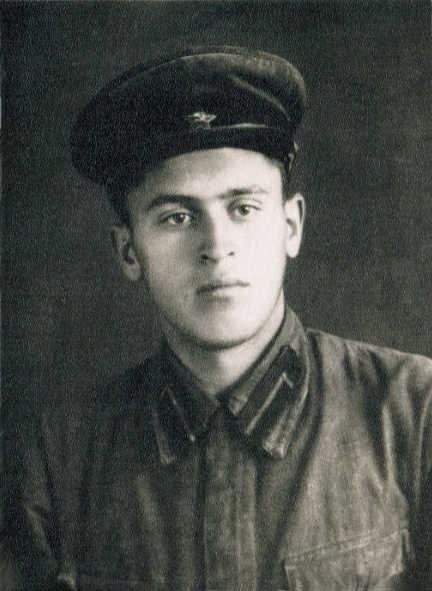
Vladimir Vladimirovich Thibeaux-Brignolle, the elder brother of Kolya Thibault, who died in the war in 1943, the archive of Kazantseva M.E.

Lisa invited her mother and Kolya, who stayed after her father's death in Osinniki, to Kemerovo. Kolya in 1943 was only 8 years old. Liza's daughter Katya grew up in 1942, who was only 7 years younger than Kolya, her uncle.
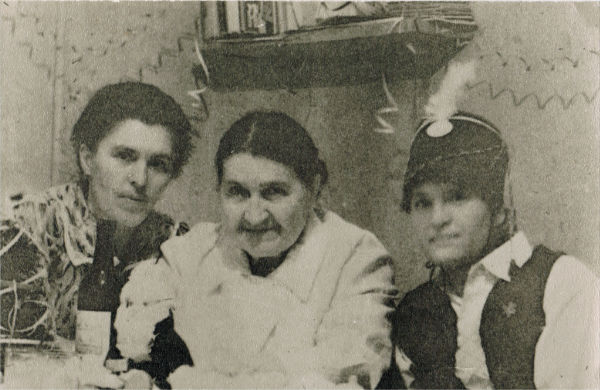
Kemerovo, December 31, 1964. Meeting of the New 1965 At the table - Elizaveta Vladimirovna Thibeaux-Brignolle, elder sister of Kolya Thibault; Anastasia Prokhorovna Thibeaux-Brignolle, the mother of Kolya Thibault; Katya is the daughter of Elizaveta Vladimirovna, niece of Kolya Thibault. Archive Kazantseva M.E.
And what about them now? Where are they?
AE: Kolya's sister - Elizaveta Vladimirovna - died in 2001 in Kemerovo. Unfortunately, her daughter, Kolya's niece, is no longer alive too.
MP: Tell me, please, are there any memories, how did Kolya treat his father in the camps as an "enemy of the people"?
SEK: Kolya was cautious enough and did not chat about anything. He hid that his father was arrested as an enemy of the people. In case of questions about Kolya's unusual surname, he invented a legend about the French communist.
MP: I met the legend of the son of a French communist on the Internet, but did not know that Kolya himself had invented it to avoid unnecessary questions about where his father was and what he was doing. Well done!
AE: We have a record of a short story about teh family of Kolya's sister, Elizaveta Vladimirovna:
"It should be noted that, despite all the difficulties and hardships, Vladimir Iosifovich's family was always dominated by friendly relations between all members of the family, mutual support and exceptional diligence." Work was the foundation of our well-being and relationships - living in Siberia, we, the children, learned to grow vegetables, take care of animals, store food for them, etc. Our mother taught us all this with a kind smile and great patience. While living a primitive peasant life, we read a lot and tried to get education, mother in We were happy to help us.The life of my parents could be called HEROIC.
E. Thibeaux-Brignolle. November 20, 1988 "(from the archive of G. V. Gasselblat)
MP: Alexei Rakitin asked me to ask my relatives if Nikolay showed any disagreement with the policy of Stalin, Khrushchev or the CPSU in general. Did he sing songs (couplets, ditties) satirical content, whether he told jokes of a similar theme?
SEK: Kolya could make critical remarks, ironically on the policy of Stalin, Khrushchev. Before Khrushchev came to power, there was a very strict time. Under Khrushchev, such rigor was no longer there. In the campaigns I could sing songs and ditties of satirical content.
He came to us in Kamensk-Uralsky only once, in the beginning of 1956. In our house he did not sing then.
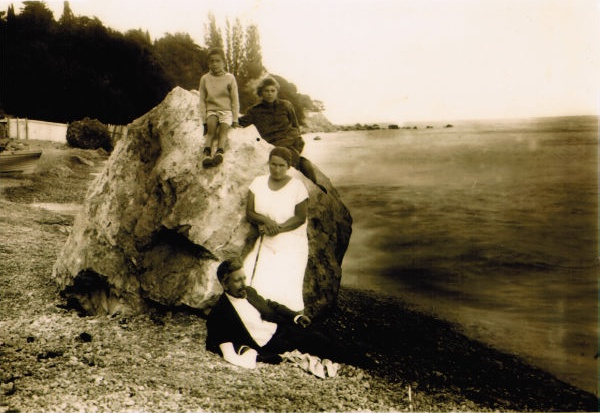
The family of Vladimir Iosifovich in the south (Crimea), October 1929. On the stone sit: Volodya, Lisa. In a white dress, Anastasia Prohorovna Thibeaux-Brignolle, Vladimir Iosifovich Thibeaux-Brignolle is in the sand. From the archives of M.E. Kazantseva
And how did the life of the rest of Thibeaux-Brignolle - brothers and sisters of Kolya's father?
AE: I will quote facts from the memories of my grandmother published in the Urals magazine Vesi:
Anna Iosifovna and her husband were arrested in 1937 both in the same night.
He was soon shot as an "agent of foreign intelligence services" (the family did not know about it, then it was called "10 years without the right of correspondence").
She was arrested for "failure to report", spent 10 years in the camp.
There are memories that Kolya's father shared the views of another repressed relative expressed during the interrogation: he did not accept the revolution because of her cruelty and believed that Russia's future lies in its connection with Western countries.
Kolya's uncle - Sergey Iosifovich Thibeaux-Brignolle - was very religious, served as a sapper in the army of Kolchak. He fell ill with typhus, was captured red, then drafted into the Red Army. He died in 1931.
The other uncle - Dmitry Iosifovich - was talented, well-drawn, wrote poetry. During the Civil War he was an officer in the White Army, he hated Soviet power.
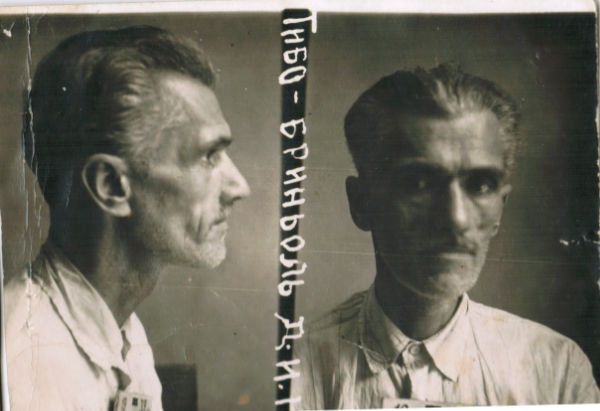
Dmitry Iosifovich Thibeaux-Brignolle on the day of his arrest, October 1939, Sverdlovsk
Here he is 46 years old. This photo my mother accidentally saw in the journalist Svetlana Dobrynina, who wrote an article about Dmitry Iosifovich "The soul is free even before death" in 1994.
Dmitry Iosifovich was shot in 1941.
MP: It seems to me that Kolya's personality in the light of the destinies of his relatives is acquired by a whiteguard halo, which gives a peculiar romantic character to his image. "White is a threat to blackness," wrote Marina Tsvetaeva. This I like more than modern, how to say it softer, exotic versions, arising from the unusual French name Thibault Brignoles. I do not mean the version in which Kolya and Semyon act as distributors of drugs in the group, but I'm talking about the version recently published by the Dyatlov Memorial Foundation - about Kolya as an adventurer hunting for the Golden Woman. And precisely because he was a French citizen, according to this version, they kill the whole group.
AE: Mum has long found archival documents that our ancestors were forced to transfer to Russian citizenship in the 50s of the XIX century because of the Russian-Turkish war, when France was against Russia, that is, 100 years before Kolya's expedition! Only one of the sons of the machinist Thibault quickly regained French citizenship, and his descendants retained French citizenship in the 20th century.
MP: Anna, please tell me, how did you personally perceive this news when you realized that you are a relative of the same Nikolay Thibeaux-Brignolle? What feelings did you experience, and do you feel now?
AE: About this topic, I learned gradually, first - more than 10 years ago - from my mother that our relative was in a group of tourists who died in 1959, but knew about it without terrible details. Then I read the books of A. Matveeva and L. Gushchina, I read the materials on the Internet. I'm very sorry for all the guys, it's hard to think about what has not come true for them, about the misfortune of their families. They would have known that many years later many people would analyze their participation in this campaign, read diaries, and think about them. There is something unclosed in this story, maybe that's why it attracts many.
MP: Rather undisclosed or hidden ... And what is the family version of the tragedy that happened? Your personal thoughts and comments about inconsistencies in the investigation? Do you agree with the conclusions of the physical and technical expertise that the tourists themselves cut the tent?
I, for one, do not agree. Purely for psychological reasons, the guys could not so casually and so carelessly cut in in essence destroy their house - a tent, which they carefully stored and repaired in all campaigns, at every free moment. I recall analogies with extreme cases in other expeditions. When there was a fire in the tent because of the stove, even in those cases the stove itself was almost thrown out with bare hands. But nobody was going to cut the tent. If you look at the photo of the tent, it's all torn to shreds. Like someone crazy was trashing it. And it is not likely that the cuts were made the ice ax of the searchers from Slobtsov group, although they take the blame on themselves. This is in vain.
I personally think that the tent was cut by strangers.
Examination of the tent was made formally and superficially, as everything else in this unfortunate case. Expert G. Churkina years later admitted that the examination could have found out more information on the cuts, but this was not her task at hand. From the words of the criminalist, we can speculate that the incisions were made at a different time, and the time could not have coincided with the official time of the tragedy, pinpointed by the investigation.
MEK: There was no definite version in the family. I remember conversations about strong radioactivity, that tourists behaved as if blinded, that the clothes of some were on others. That the authorities urged their parents to bury the tourists in Ivdel. That the military showed great activity, as if covering something only known to them.
MP: It seems to me that the the person from the district committee who sent the relatives of Dyatlov group to get military pension, was very cunning. Military - a concept that includes the Armed Forces of the USSR, as well as servicemen of the Internal Troops of the USSR Ministry of Internal Affairs. And by simple words, the guards of Ivdellag. But many people, when analyzing these words, think of rockets and fireballs, since the military are associated with these types of weapons.
MEK: I think that none of the tourists would cut the tent. An enemy cut it from the inside, sitting in the tent, observing the slope. And the tourists watched the tent from the cedar, making an "opening". So they looked from afar to each other. And what happened before - something monstrous, which none of them could foresee.
By the way, even in 1959 there was no talk about an avalanche. It was said that they were running, holding hands, as if they couldn't see.
СЕК: What was the version then? Test weapons. Why? Because the tourists were burned, poisoned. Judging by their actions - they were blinded. They scattered, there were not all in one place. There was a moment of insanity. It can be from poisoning, and from cold. Night in the woods, in the dark. Slowly moving, very poorly thinking. They took hold of branches, coudln't see two steps ahead.
Many involved in the search, (and maybe relatives of the tourists) signed non-disclosure.
MP: Did Kolya know Semyon Zolotaryov before this trek?
СЕК: We don't think so. Semyon joined the group unexpectedly for everyone. It can not be ruled out that it was incerted to monitor the tourists. If Kolya suspected that Semyon Zolotaryov cooperated with the KGB, then I think is very probable that there would be some kinf of dislike between Kolya and Zolotaryov, because one suffered from the KGB, and the other was working with them.
Perhaps S. Zolotaryov was in the group to observe the tourists, so they don't escape abroad. This trip is a good reason to go to the border and get away. At that time, in tourist trips abroad, they always introduced a cheerful open person with this purpose in mind: to watch that they did not run away.
MP: Yes, there was such a directive to search parties in the party committee: to collect information that the unidentified part of the group (the last four bodies in the ravine) could not have been escaped abroad. This information is confirmed by E. Zinoviev, V. M. Askinadzi, and Y. E. Yudin. But in my opinion Semyon Alexeevich (I think M.P. means Alexandrovich - ed. note) had another task in that expedition, much more complicated and responsible than watching the Komsomol members, so that they don't abscond.
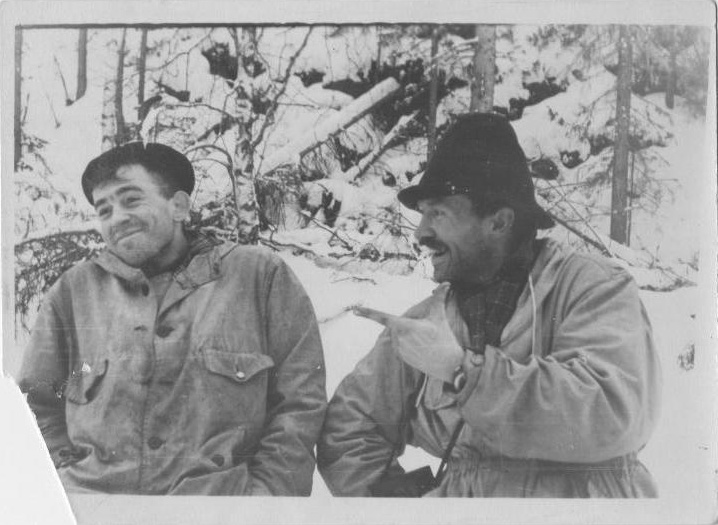
Photo from the last trek: Kolya and Semyon Zolotaryov
About Kolya's hat in this photo: it must have been a warm hat, because when Zolotaryov put his beret on him, Kolya was clearly cold, his shoulders raised to his ears.
MP: Please tell me which version seems the most convincing to you?
AE: The most interesting for me are two works on this topic: the analysis of documents, testimony made by Gennady Ivanovich Kizilov, as well as the essay by Alexei Rakitin (very interesting is the analysis of photo films, biographies of the participants in the trek, analysis of contradictory facts). The spy topic at first glance seems fantastic, but for that time it is likely.
To come to the conclusions made by G.I. Kizilov, you need to be free from stereotypes of thinking. Usually they were looking for an answer within the framework of how everything was shown in the criminal case, he went beyond that. With great interest I read the articles of the esteemed G.I. Kizilov on this topic.
I read your articles, Maya: an interview with V. Askinadzi, V. Androsov and other publications. For several years I have been browsing through articles and forums on the Internet about this topic, I thought that everything that can be done, already found, discussed, studied, and you are well done, found "gaps" and successfully work!
I like to read your discussions with Gennady Ivanovich.
MP: Thank you, Anna!
Gennady Ivanovich Kizilov was not criticized only by the laziest, who did not read his account of the events. But you are right, Kizilov blasted this long-lasting lie, questioning the materials of the copy of the Criminal case that was widely available on the Internet.
The topic that Alexei Rakitin reveals is certainly very interesting. And most importantly, he has an evidence base. And recently in the "Komsomolskaya Pravda" journalists N. Varsegov and Natalia Ko, who wrote a series of reports about the tragedy, mentioned the caught spy radio operator from Saranpaul. The neighborhoods of Ivdellag are places of concentration of many former policemen and others, really enemies of the Soviet power, and not only foes, fictitious by Stalin's investigators, who stayed and remained in those places.
But let's leave all these spies and conspirators in peace, it's better to talk about ours, about women's - about love.
Did Kolya have a girlfriend? He is such a charismatic youth that I think many girls were probably in love with him, and he probably did not bypass them either. If I lived in that time and place, I would definitely fall in love with Kolya.
MEK: There was no mentioning in the family about Kolya having a girlfriend. The best friend was not mentioned either. Hikes are a special condition when the whole group is friendly, not breaking up into pairs.
MP: Yudin said that they still had their sympathies and attachments in the expeditions. Probably Kolya liked Lyuda. She generally singled out these guys - Kolya, Yura Krivonischenko, Rustik Slobodin, who graduated from the institute and were working already. "Rustik and Kolya talked a little about everything, about work, etc. In general, I like these guys: the big difference between them is Rustik, Ko, Yura and us who graduated from the institute. Still their judgments are the most mature and smarter than ours. Lord, I do not even talk about my own".
Look, Lyuda here calls Kolya a somewhat intimate "Ko". I generally get the impression that Lyuda is not aware of her own affection for Kolya that has began to appear in this expedition. She wrote about him in a diary, and made fun of them in that satirical flyer, called professors and associate professors of love sciences, "love will accidentally come", everything could happen after the trek, but something else happened, irreparable and terrible, they were found in a ravine with terrible injuries, and they were together.
AE: Honestly, I don't adhere to this conclusion. It was interesting for Lyuda to communicate with older hikers, among whom was Kolya. I was convinced by the analysis of Rakitin's films, from which it can be concluded that Kolya did not fancy any of the girls in the group.
MP: In his memoirs on the hikers, E. Zinoviev recounts: "Kolya was very popular in student quarters and was sometimes given rare and forbidden books rare for the time." He generously presented us, newly acquired and trusted friends, the opportunity for one or two nights to get acquainted with the next book finding. So suddenly in our quarter room appeared the pre-revolutionary edition of Muller's book "Sexuality". Thus in the UPI dormitory number 5 was closed a gap in the sexual education of students ..." I tried to find information about this book they were reading. And I discovered that the book under this name was of another author - Fogel. By Y. Muller, the scientist and physiologist, who was unusually popular at the beginning of the last century, laying the foundations of physiology and histology, were the editions "The Sexual Life of Man" in 3 volumes by Muller, translated by I.G. Ashkinazi, St. Petersburg, 1909 and "Sexual morals and mancipation of women" scientific-popular essay, with an annex by A. A. Forel "Sexuality and medicine", Moscow, 1911. I wonder which of these books were they reading, about the sexual liberation of women or about the sexual question of man ...
AE: Yes, by the way, Kolya was named professor of love science - probably because of these books.
MP: Undoubtedly! Continuing the idea of the relationship between Lyuda and Kolya, we can not ignore the diaries.
Here is their dispute over sewing a tent in that famous diary - an obvious forgery. I personally do not believe this record. I'd rather fantasize about the love affection between Kolya and Lyuda than I would believe investigator Ivanov, who wrote that Lyuda's jacket was on Semyon Zolotaryov, and her green hat was on Kolya which means in general that they stripped the girl.
I admit, for example, I thought that Kolya did not like to keep diaries. In one of the versions of the group's general diary I see: Kolya's entry: "I can not, although I tried" - on January 26. And then in the diary there are no records on behalf of Kolya. It's a bit strange to say that the group diary has versions... This is nonsense. There can not be several versions of the group's general diary. There must be one single diary of the group from that very trek. But the reality on Internet were published several versions of the group's diary. There should be a way to clarify which one is the real one. In the famous issue of "The Ural Pathfinder" magazine for January 2009, very different entries were published from the general diary of the group, which for a long time is well known to all, and a copy of which is available in the Criminal case. I asked the Foundation, where did these records come from? Who submitted them for publication? What source did you use? They pointed to V.G. Yakimenko. "I must know Yakimenko, as the issuing editor of that number." I wrote him a letter, but I did not get an answer.
The Foundation's answer shed some light om the situation: "Gushtin's book does not have the same diary as in the criminal case. In the diary of the last expedition the text has two notes in brackets "from A.G.", probably Anatoliy Gushtin. In the magazine and in his book (1999 and 2009 editions) texts of diaries coincide. So the source appears to be Gushtin". Where did Gushtin see this diary, one can only assume that in the Criminal case, but not the copy that is now handed out and replicated everywhere, but in the original.
AE: Having looked through the diaries, I began to compile a table, comparing the facts from different diaries by dates, then thought about the sources. In Zina's scanned diary there is nothing about the dispute about sewing the tent. As for the two options - who argued about sewing the tent - it's strange that different people argue in different versions, that is, both people could not have written both versions (he could not mix up Lyuda and Kolevatov), but used almost identical phrases - "took up needle - took a needle", "the weather smiles at us, " the sun is playing "...
And then, in a diary, (falsely) attributed to Zina, it was explained that on 30.01 they were on duty again Tibo and Kolevatov, for a slow gathering the day before. It also says that Kolya took a needle and then: "we mended holes, there were so many of them, that there was enough work for everyone, except for two people on duty and Lyuda." The guys are terribly outraged ." - it's a little strange that it says "with the exception of two on duty and Lyuda" - if it was already said that Kolya was on duty and also sewed up the tent! It is either a mistake made while typing the originals, or traces of falsifications, which is consistent with the opinion of Gennady Ivanovich Kizilov. And I also noticed the comments about the fire - in one diary it was said that "it took up a long time for the people on duty to start a fire in the morning". And in the general group diary - the entry for 30.01 it says that in the evening "as always, we quickly build a bonfire and put the tent on the spruce".
MP: Anna, that's just the point, that there are many inconsistencies with these diaries.
In the recently published notebooks of journalist Grigoriev, we can see which Zina's diary he copied into his notebook. There is nothing about outrage against Lyuda. It can be assumed that in the Criminal case there was another diary of one of the members of Dytalov group. I can be mistaken, but my opinion is that the "wrong" diary was specially launched - where Lyuda argues with Kolya about who of them to sew up the tent. They argued till the whole group stand against her. She was offended and went into the tent. And she was not even given a piece of tangerine. And this can not be purely psychological, from the female point of view. Lyuda admired Kolya in his notebook, his mind, and probably wanted that they, too, older guys, also noticed and respected her. And so she never goes to argue with the man whose mind she admired, about who should take up the needle, her or him. Of course, the woman first will take the needle without any controversy and will take up sewing. In the case of Lyuda, "Kolya took a needle". He acted as a Gentleman, even in this diary.
And the rest of the guys are represented in this record not in their best - feast - they share the tangerine without leaving a piece for Lyuda. Really guys could do that to a girl? In our group in kontakte.ru "I. Dyatlov's group Pass", we even conducted a small survey on the topic, who from the group shared his piece of tangerine with Lyuda? An equal number of votes came for "Nobody" and "Semyon Zolotaryov". "Kolya" follows right after. An opinion was expressed that "somebody might not have eaten, but brought his own share of Dubinina, secretly, Zolotaryov, for example, or Thibeaux-Brignolle, or Kolevatov", the birthday boy ...
"The Ural Pathfinder" magazine published exactly the version of Kolya's dispute with Sasha Kolevatov, it is said that on January 30 they were on duty, which means that the people on duty participated in the sewing of the tent. Therefore, it seems to me that the dispute between Kolya and Sasha Kolevatov is more plausible than a dispute between Lyuda and Kolya. And then, the dispute is not a dispute, rather comic wrangling Kolya, they say, you are a rookie, student, go sew and do not argue with the senior in rank. Kolya argues, but, apparently, he can't get ahead of Kolevatov. So Kolya simply takes a needle and sits down sewing. It is indicative even for both diaries that the group was not so cloudless and friendly, as the former students participating in the search are trying to convince us.
I want to note that Kolya was very clean and neat. Even in the general diary it is indicated that after a long traverse he first changed into dry and clean clothes. And only then he agreed to sew up the tent. I was personally amazed that he had 10 pairs of clean socks on this trek and many handkerchiefs, even more than the girls ...
Generally, the diaries of Dyatlov group are a bottomless topic for discussion.
AE: I, too, when I read the fragment with a tangerine, thought that it was cruel to deprive Lyuda of a piece, of course, if you believe the diary, but was it really so?
According to Y. Yudin's memoirs, Kolya was an attentive fellow: "This is such a wonderful comrade and friend, he has such a fate, from a repressed family, but he was so attentive in expeditions." When I went on a weekend trip for the first time, I haven't even had a backpack in my life, he was older than me, he took care of the people, he will fix it, he will straighten it, everything else, he will talk to you, well, he was an amazing friend".
MP: You showed me pictures of Kolya student years, sent to your family by Galina Kryachko. I thought, maybe she was friends with Kolya, if she had so many photos of him?
MEK: I met with Galina Ivanovna Kryachko at a meeting of the Urals Genealogical Society.
In 2003, Gasselblat inspired me to make a report on my archival searches for the conference in Sverdlovsk. After the report, they approached me with questions. Galina Ivanovna came up too. She said that in 1959 she was a young girl, worked as a laboratory assistant in UPI and remembers what horror it was when the tourists died. She proposed to take me to the cemetery, to the graves of the tourists. Then she sent me books in Moscow by A. Matveeva "Dyatlov Pass" and another by A. Gushtin "The price of the state - 9 lives". She also sent several pictures of Kolya. They were given to her by Kolya's friends. I gave them to the photo center, where they made copies, retouched.
MP: I thought that Galina Hamova, whom was mentioned in the Criminal case as the person identifying the hikers belongings, could be the same Galina Kryachko. But then I noticed that their middle names are different. It's a pity that this lead was lost.
Part II >